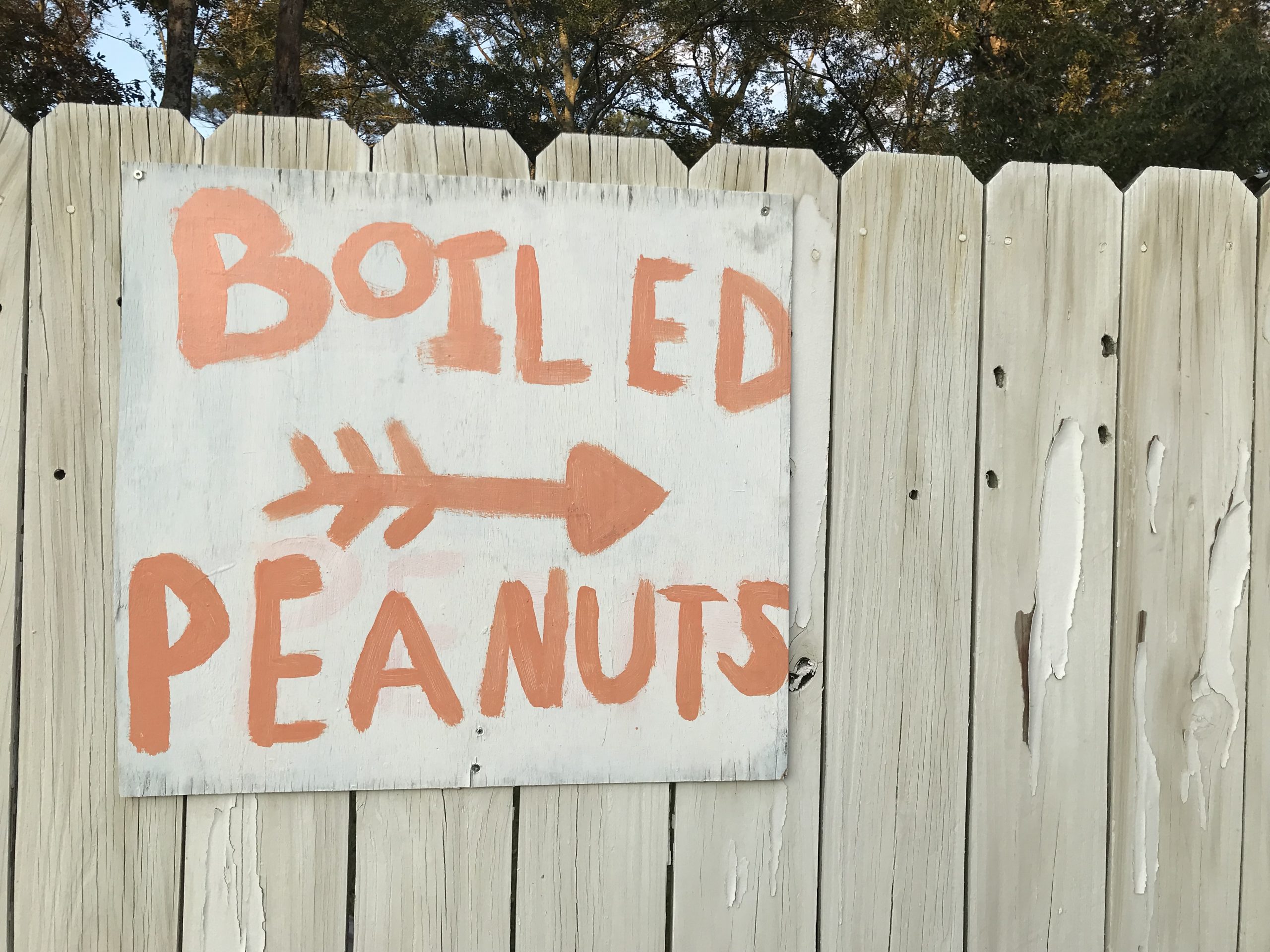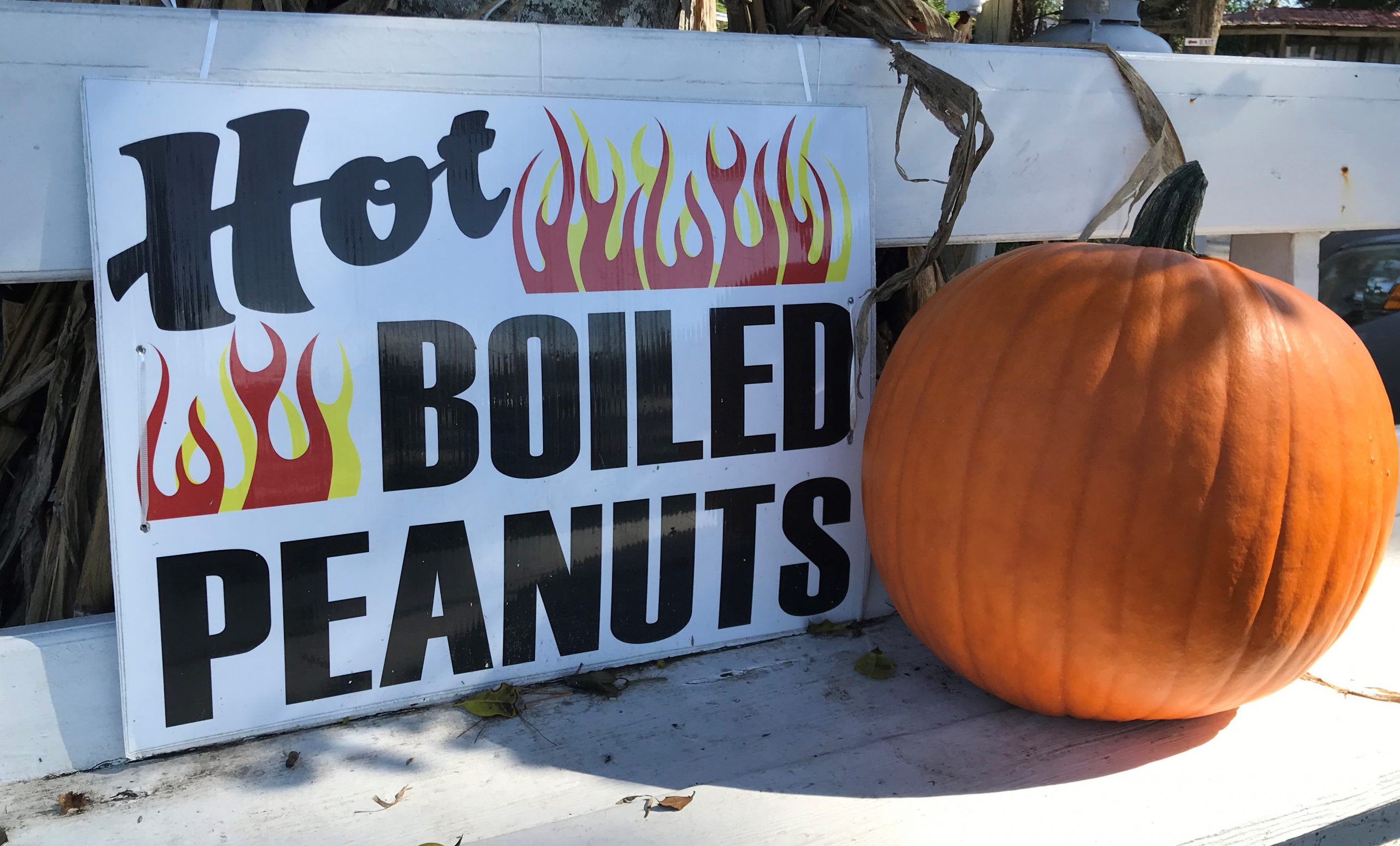
“What’s in that pot in the refrigerator,” I asked my Italian mother, hoping she’d say tomato sauce and meatballs.
“Boiled peanuts,” she answered.
Supporter Spotlight
“Boiled peanuts? Who brought you those?” I had to wonder. Mom was a great cook, until it came to Southern food. In dirt clod battles among the neighborhood kids, my brother and I could have armed ourselves with her biscuits.
“I boiled those peanuts,” Mom declared, steam rising as I rolled my eyes. “I know how to boil peanuts. Just ask Charles.”
Charles was Mom’s second husband, and his opinion on boiled peanuts mattered. He grew up in South Carolina, a state where boiled peanuts are the official state snack. For Charles, each salty, tender nugget represented a cherished memory of family and annual fall peanut boils where folks gathered to simmer and then eat freshly dug peanuts.
Charles was so enamored of boiled peanuts that my mother, who had long considered them inedible, not only learned to boil peanuts but grew to love them herself. So did I. Our experience is emblematic of how boiled peanuts got around to being one of the South’s most adored foods.
They were a taste of home and identity never forgotten.
Supporter Spotlight

The boiled peanut’s complicated journey
From baseball stadium snacks to PB&Js packed in school lunches, roasted peanuts are an iconic American food, but you’d be hard-pressed to find boiled peanuts outside the southeastern United States.
Makeshift signs advertising “boiled peanuts” in fall are so plentiful across the region, especially around the Carolinas, it seems like boiled peanuts were born there. Instead, they took a complicated journey to that part of the world.
Food historians trace the peanut plant’s roots to what is now eastern Bolivia. The Incas ate so many roasted peanuts that shells still littered their floors uncovered by archeologists centuries later. Peanuts spread all the way to the Aztec empire and Atlantic islands now known as the Caribbean.
The Portuguese especially loved peanuts, raw or roasted, and by the mid-1500s had carried them to West Africa, Andrew F. Smith writes in “Peanuts: The Illustrative History of the Goober Pea.” The book is a sweeping history of the peanut.
Africans were already growing the similar, indigenous Bambara nut, named for a tribe now living mainly in Mali. Bambara nuts were and still are eaten fresh, boiled and added to stews. Both Bambara nuts and peanuts are nutritional powerhouse legumes, complete foods packed with protein, carbohydrates and fat. Prolific, easy-to-grow peanuts overtook Bambara nuts in Africa, spreading so rapidly that some historians thought peanuts originated there.
“Nguba,” the word for peanut in the African Kongo and Kimbundu languages, led to “goober,” the South’s nickname for peanuts. When European traders enslaved tens of thousands of West Africans and took them far from their birthplaces, Africans held on to their cooking traditions and memories of home. Wherever they landed, they recreated the dishes they knew as best they could, including boiled peanuts.

This is who really made boiled peanuts famous
Historical accounts over time have claimed that no one knows who first boiled peanuts. Some credited Confederate soldiers with popularizing boiled peanuts in the South. Johnny Cash, the Kingston Trio and other artists performed the American Civil War-era folk song “Goober Peas.” The lyrics involve battle-weary servicemen eating a lot of “delicious goober peas” and looking forward to more when they got home.
Food writer Robert Moss in his deep research of boiled peanuts doubts soldiers boiled goobers. Most everyone at that time preferred roasted peanuts, leading Moss to believe Africans and their descendants were probably the only people boiling peanuts. And as Smith’s book notes, “In antebellum America, Southern aristocracy viewed peanuts as trash food consumed by poor or enslaved people. Up North, they (peanuts) were looked upon as ungenteel, ‘the very symbol of rowdyism.’”
Boiled peanuts didn’t gain wide acceptance until the early 1900s. In 1915, African American agricultural scientist George Washington Carver started his famous research on how peanut crops could fill cotton fields ravaged by boll weevils. His studies led to the United States becoming one of the world’s top peanut producers. A year later, Carver published a bulletin outlining 105 ways to prepare peanuts, including boiling them for soup
By then, Africans in America had been boiling peanuts for decades. With peanuts suddenly in the spotlight, Moss thinks whites took notice of boiled goober peas. Like recipes for yams, cornbreads, stewed collards and barbecue ribs, boiled peanuts were so delicious they became another celebrated Southern specialty traced to African American culture.
How to cook boiled peanuts
Convenience stores sell boiled peanuts year-round, but as a Tidewater Virginian once told me, and everyone else who came through his line as he spooned out boiled peanuts at a late-November oyster roast, “You should only eat these in the fall. It’s too late now.”
Peanut boils happen in fall because that’s when fresh peanuts are harvested in the South, and green peanuts make the best boiled peanuts. Fresh peanuts cook faster than dried peanuts. More importantly, they are silkier and have a subtler nutty flavor. Moist and highly perishable, fresh peanuts must be used within a few days of picking, hence the need to host a big peanut boil. Whoever comes to help dig and cook peanuts gets to eat their fill.
Always refrigerate boiled peanuts and eat them within a few days, otherwise they’ll spoil. In eastern North Carolina, find fresh peanuts to cook yourself from mid-September to mid-October at farmers markets, produce stands and smaller grocery stores like Piggly Wiggly. Boiled peanuts pop up around the same time at fresh markets and roadside stands.
Boil peanuts in water seasoned with plenty of salt. Consider adding bourbon, seasoning blends, soy sauce or even molasses to the brine. Creative preparations are fine. Pro chefs have been known to swirl boiled peanut purees around trendy, New America pork belly dishes.
I, myself, have swooned over a housemade sweet potato tot swiped across a tasty smear of boiled peanut hummus, but I prefer the pleasure of eating simple boiled peanuts. Squeezing boiled peanuts from their shells and savoring their uncomplicated flavor fills me up with nostalgia for times when food was truly seasonal, something to harvest and prepare together. It’s the kind of food you never forget.
Basic Boiled Peanuts
2 pounds raw, green peanuts or raw dried peanuts, in their shells
1/3 to 1/2 cup of salt (see note)
3 gallons of water
Note: If you are adding other seasonings such as hot peppers, spice mixes, vinegar or bourbon, add to the pot along with the salt. Add more salt if you like salty foods, less if you don’t.
Procedure: Rinse peanuts to remove any dirt clinging to their shells. Put salt, water and peanuts in a large pot and place on the stove over high heat. Cover the pot and bring the peanuts to a boil. Reduce the heat to a simmer and cook for 4 to 6 hours, or until the peanuts are very tender. Check green peanuts after two or three hours, as they cook faster than dried peanuts. To test, remove a peanut from the pot, let cook, open the shell and taste the peanut. It should be tender but not mushy. When peanuts are done cooking, turn off the heat, drain peanuts, reserving some of the liquid, and transfer them to a large baking sheet to cool. Serve peanuts immediately while they’re warm or transfer them, with a little bit of the cooking liquid, into a covered container and refrigerate no longer than 4 or 5 days.







